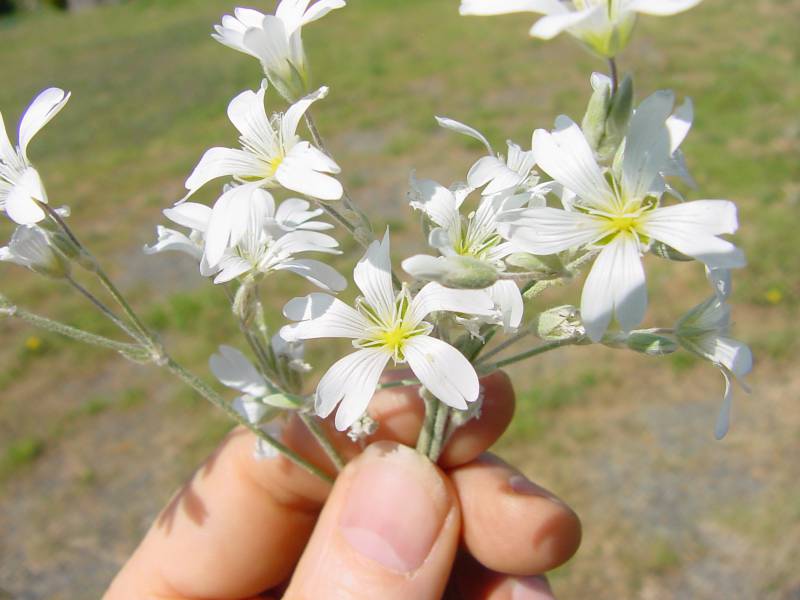Cerastium texanum
Cerastium tomentosum
snow-in-summer
Leaves opposite, sessile, linear to linear-lanceolate, 10-60 mm. long and 2-8 mm. wide, not glandular.
Inflorescences of lax, 3- to 13-flowered, bracteate cymes; pedicles ascending, straight, 10-40 mm. long;
flowers white, 12-20 mm. in diameter;
sepals 5, narrowly lanceolate-elliptic, 5-7 mm. long;
petals 5, deltoid, 2 lobed, white, 10-18 mm. long;
stamens 10;
styles 5.
Capsules cylindric, slightly curved, 10-15 mm. long, with 10 erect teeth.
Cerastium texanum
Cerastium tomentosum
Occurring west of the Cascades crest in lowland western Washington British Columbia to Oregon, east to Montana, Wyoming, Nebraska, the Great Lakes region, and northeastern North America.


